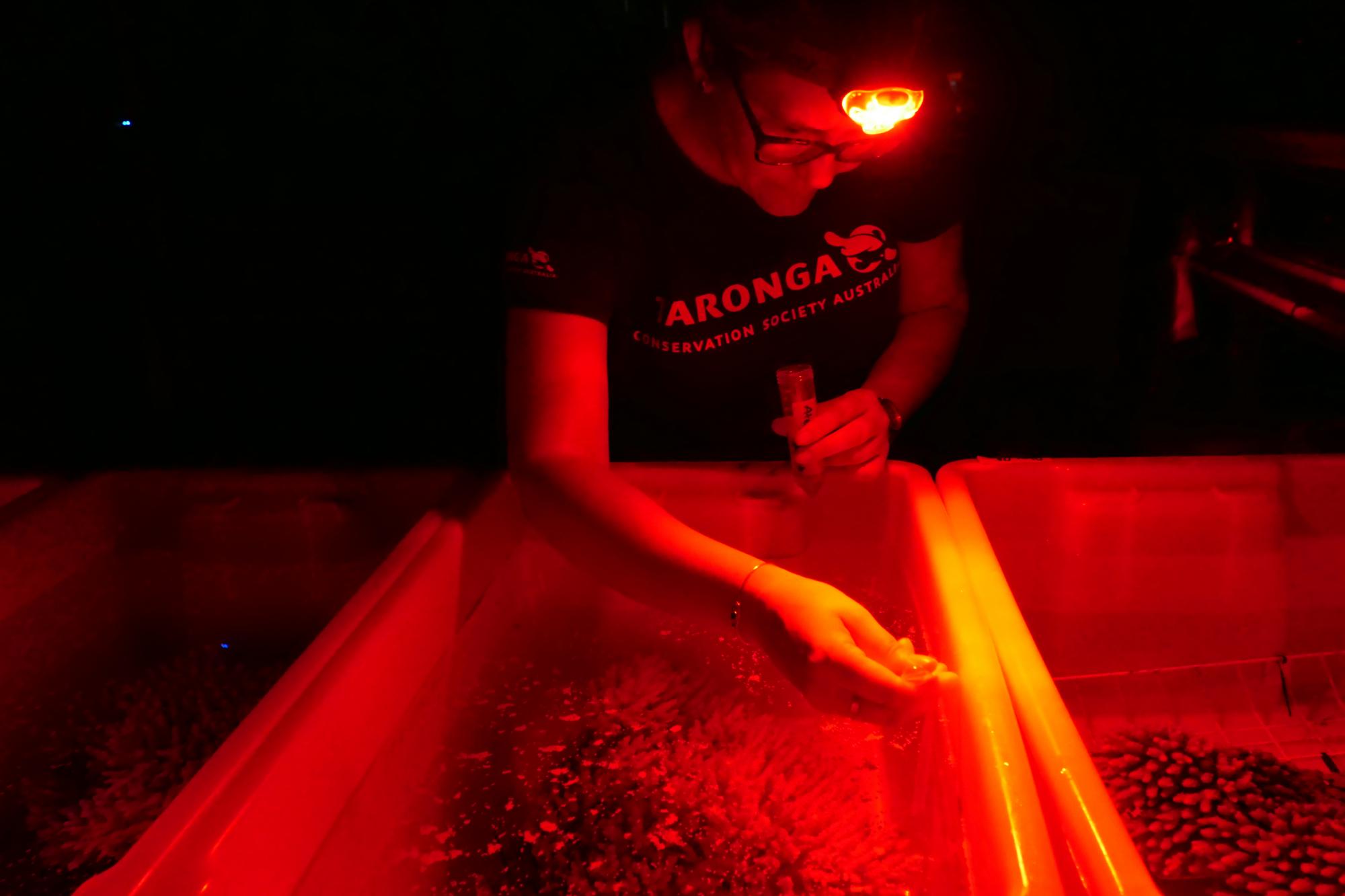Posted on 10th December 2019 by Media Relations
Taronga’s top scientists are working to save the Great Barrier Reef by safeguarding the genetic diversity and health of the Great Barrier Reef, cryopreserving cells of reef-building coral species from the yearly spawning event.
Precious samples of sperm and other cells are stored in world’s largest frozen repository of living coral, located at Taronga’s CryoDiversity Banks at both Taronga Western Plains Zoo, Dubbo and Taronga Zoo, Sydney.
The yearly spawning event sees collaborators and scientists meet at the National Sea Simulator, a world class marine research facility operated by the Australian Institute of Marine Science (AIMS) near Townsville. The National Sea Simulator provides a stable platform of water quality, temperature and light exposure to allow the coral to release their egg and sperm bundles in the same way and timing as they would in nature.
Taronga is the leading organisation in Australia applying cryopreservation technologies to reef management, restoration and research, for the conservation management of the Great Barrier Reef. Our team of biologists have been working with the Smithsonian Institution, AIMS and the Great Barrier Reef Foundation since 2011, focusing on the cryopreservation of keystone coral reef species from the Great Barrier Reef, and demonstrating the ability of cryopreserved coral sperm to fertilise coral eggs.
“Following this year’s spawning event the Taronga CryoDiversity Bank Great Barrier Reef collection now includes cells from 26 species of coral and is the largest frozen repository of living coral in the world” Said Dr Rebecca Hobbs, a Taronga reproductive biologist.

“Over the six spawning nights last November our team banked samples from 79 individual colonies of 15 different coral species, with five new species being added to the CryoDiversity Bank this year. As with plant seedbanks, our CryoDiversity Bank represents an invaluable living vault. We can thaw out cells decades, or even centuries, from now to produce living coral offspring. Providing that a healthy habitat exists, these offspring can bolster the genetic diversity of priority coral populations and help ensure their long-term survival.” said Dr Hobbs.
The Great Barrier Reef and other reef systems are under threat from a variety of environmental factors driven primarily by impacts of climate change. To ensure that reef systems have the opportunity to thrive into the future and recover from devastating impacts of coral bleaching events like the ones seen in 2016 and 2017, genetic diversity is the linchpin. Cryopreservation can secure genetic diversity and represents one approach to avoiding some of the genetic loss that is occurring in the Great Barrier Reef.
“Cryo-repositories of living coral cells and tissues are such an important biological resource for scientists and conservation managers. Taronga’s CryoDiversity Bank is allowing us to learn more about coral biology and provide genetically diverse coral cells for use in preservation and repair of the Great Barrier Reef,” said Dr Justine O’Brien, Taronga’s Manager of Conservation Science.
“The Taronga CryoDiversity Bank now has coral species represented from northern, central and southern regions of the Great Barrier Reef and each year we continue to build on the genetic diversity of the cryo-repository across our two zoos.” said Dr O’Brien.
Taronga has been involved in the Reef Recovery Program since 2011, sending a team every year to the Great Barrier Reef annual spawning event to collect, assess and cryopreserve as much coral material as possible for transfer into the biosecure Taronga CryoDiversity Banks.